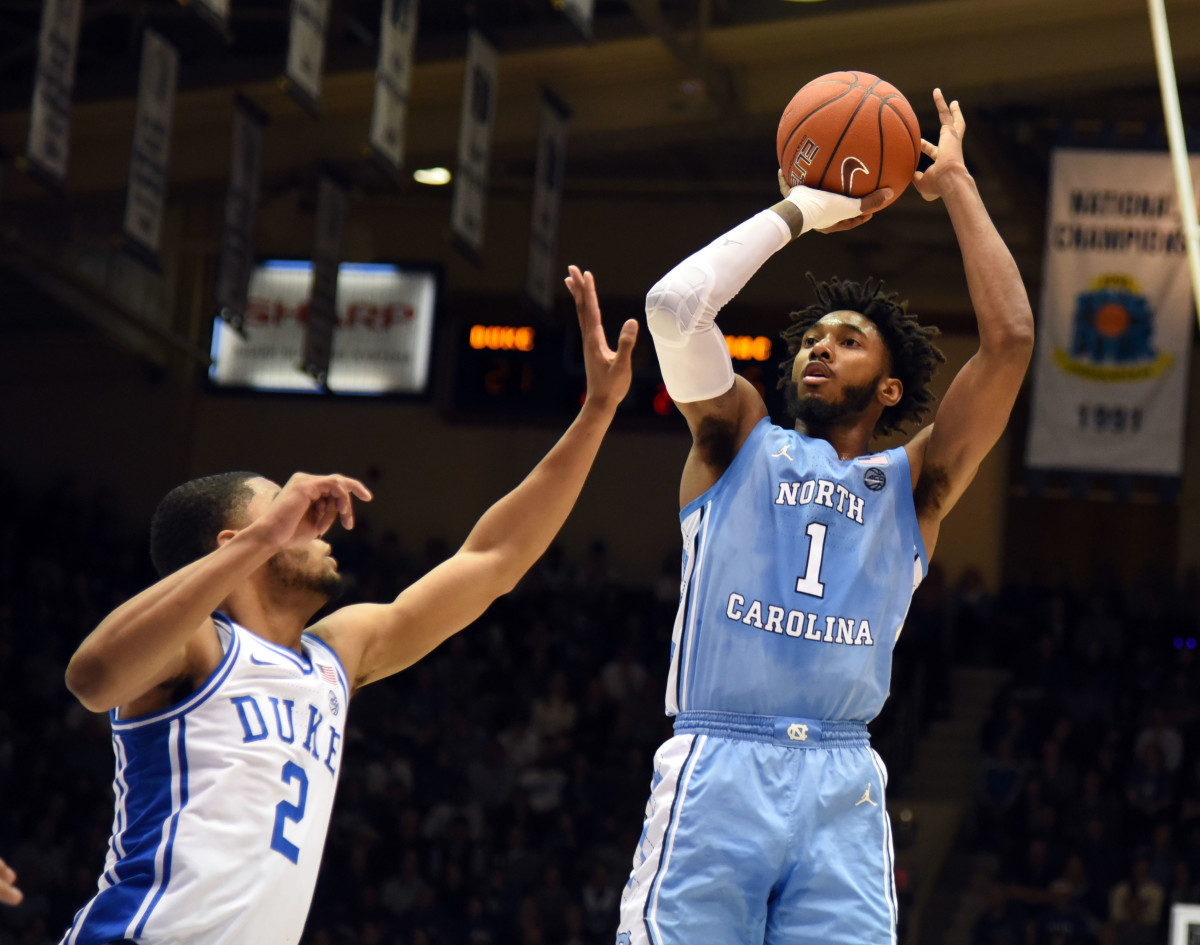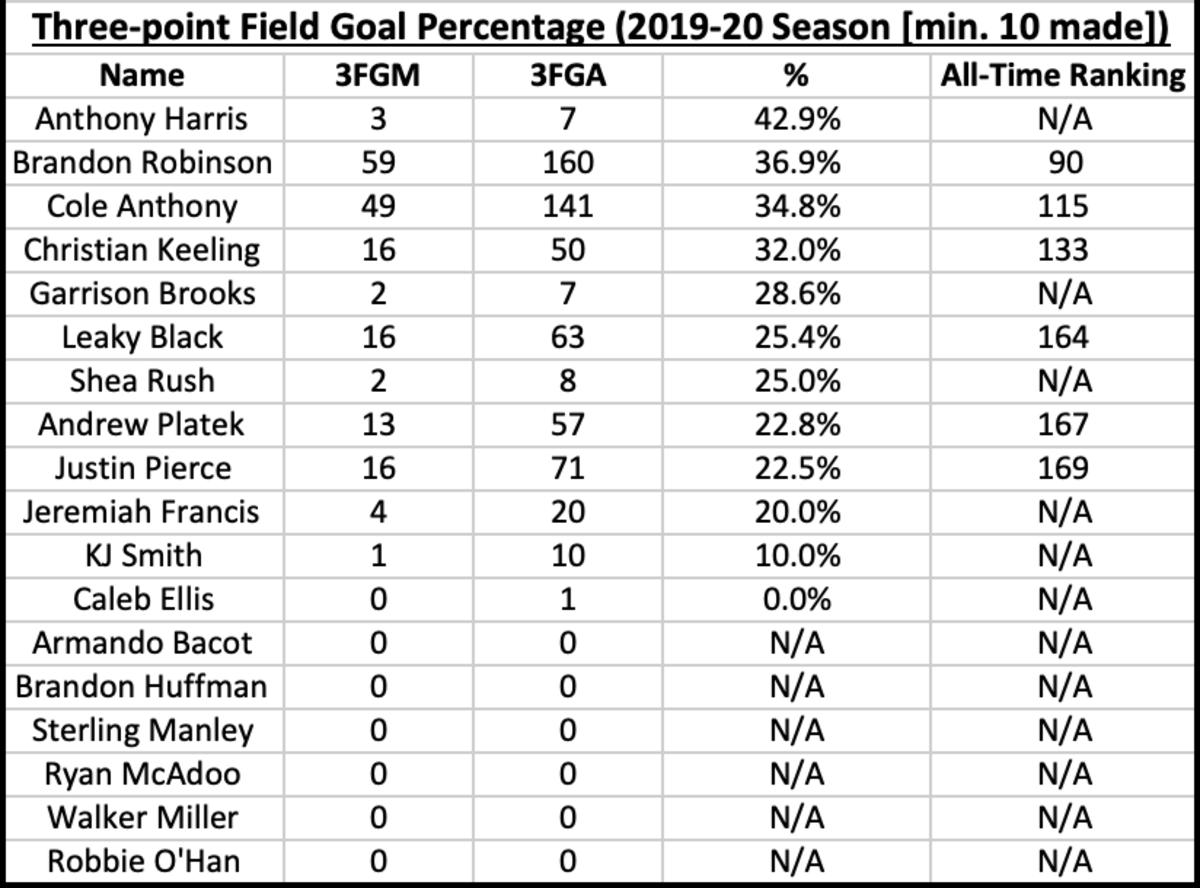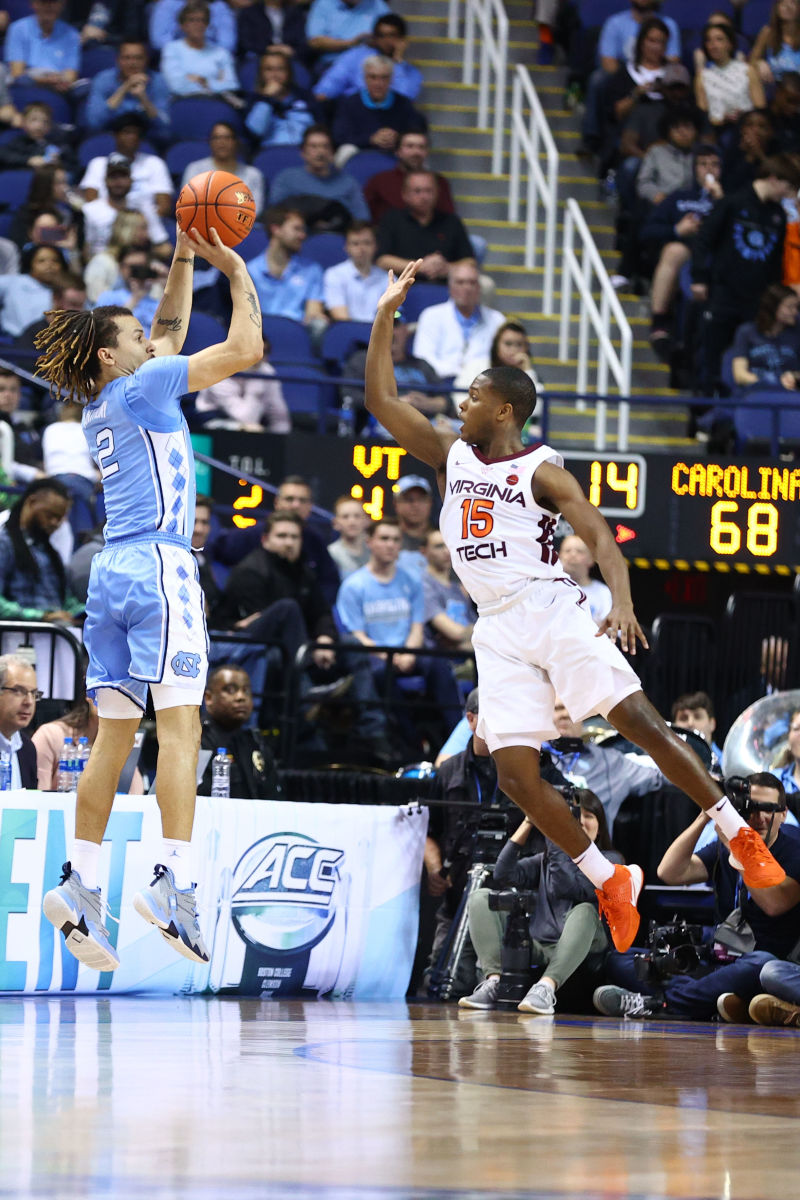UNC Basketball: 2019-20 Stats in Review - Three-Point Percentage
In the 2006-07 college basketball season, a freshman from Davidson College tied for third in the country in made three-pointers (122). The next season he led the nation with 162 (still the most ever in a single season) and his junior year he finished fifth in the nation with 130 threes, before being drafted seventh overall by the Warriors in the 2009 NBA Draft.
11 seasons later, Steph Curry and his three-point shooting revolution have forever altered the game of basketball.
Here’s a couple of Steph Curry three-point shooting nuggets for you:
- 14 times in his career he has hit 10 or more threes in a single game.
- Led the NBA in made threes every season from 2012-13 through 2016-17.
- Already third in number of career made threes behind two guys you might have heard of named Ray Allen and Reggie Miller.
- Only player to ever make 400 threes in a season.
- Holds positions one, three, four, six, and nine on the NBA top 10 list for most three made in a single season.
The basketball analytics era is upon us. We have learned that close-range twos and the three-point shot offer the best value in basketball. Curry and his Warrior teammates have ridden this train to the last five straight NBA Finals, winning three of them.
As would only make sense, the three-point boom has also made its way to the college game. In the amateur ranks, the three-point shot is even more valuable because of its shorter distance.
For Curry’s first two years of college, the three-point line was 19 feet, nine inches from the basket. In 2008-09, the NCAA moved the line back a foot to 20 feet, nine inches. Apparently Steph was making things look too easy.
All of this culminated in the NCAA once again moving the line back to the FIBA distance of 22 feet, 1.75 inches.
Entering the 2019-20 season, Carolina was losing the likes of Cam Johnson, Coby White, Luke Maye, and Kenny Williams in the midst of this move backwards. How would these personnel changes and new distance affect the 2019-20 Tar Heels’ ability to shoot the three? Let’s find out.

Over the course of the past several weeks, I’ve been reviewing the stats from the 2019-20 North Carolina basketball team, one category at a time. We’ve already looked at total points, total rebounds, total assists, total three-pointers, total blocks, total steals, field goal percentage, and points per game [INSERT LINKS FOR ALL THESE]. We move today to our final stat category, three-point percentage.
As a reminder: while these stats won’t tell the whole story of the season, they will help provide context and insight for both the present and historical context.
The following chart lists each player, their three-point percentage for the season, and where they ranked in the Carolina history books for three-point percentage in a single season (for those who achieved the minimum threshold of 10 made threes).

Observations
- Brandon Robinson led the team (for those who qualified) with a 36.9 percent clip (59-for-160). That means that no player who qualified made 40 percent of their three-point attempts.
- Robinson’s 36.9 percent is the lowest qualifying three-point percentage to lead a Carolina team ever.
- The only player on the 2019-20 team who made higher than 40 percent was Anthony Harris, but he had just seven attempts.
- Outside of Harris, no other Tar Heel who will return in 2020-21 hit at least 30 percent of their threes.
- As a team, Carolina shot just 30.4 percent (181-for-595) from three. This is the lowest team total in Carolina history.
- The previous low was the 2015-16 team that shot 32.7 percent (@24-for-685).
- For comparison’s sake, four teams in Carolina history have shot over 40 percent: 1986-87 (43.6 percent, 213-for-488), 1987-88 (43.0 percent, 169-for-393), 1994-95 (41.0 percent, 266-for-648, and 2004-05 (40.3 percent, 277-for-687).
- A diversion from this season: The 2008-09 national championship team featured the only time in Carolina history that three teammates made 50+ three-pointers while shooting over 40 percent. Ty Lawson (51-for-108, 47.2 percent), Wayne Ellington (85-for-204, 41.7 percent), and Danny Green (77-for-184, 41.8 percent) made up that trio.

Conclusions
Numbers and stats don’t tell the whole story, but they do help tell the story. So what story do these numbers help tell?
This is yet another statistical metric where the Tar Heels set historical lows. To be fair, in a year where injuries wreaked havoc on the entire team, it was those who would have likely helped bring up the three-point percentage who missed the most time.
Anthony Harris, Brandon Robinson, and Cole Anthony were the top three-point shooters percentage-wise and they missed a combined 48 games.
As mentioned earlier, the new distance certainly had a negative effect on the team's three-point percentage. As did the loss of several veteran, highly accomplished three-point shooters.
The 2020-21 Tar Heels return Anthony Harris, who shot well from deep but with an extremely small sample size. No other returning player hit more than 30 percent of their threes last season.
We’ve always heard that Andrew Platek shoots well in practice, but that is yet to materialize in a game setting. Can he put together a strong senior season?
Can Leaky Black, with his first fully healthy offseason, find more accuracy in his shot?
It appears that the 2020-21 iteration of Carolina basketball will rely heavily upon newcomers such as Caleb Love, RJ Davis, Puff Johnson, and Kerwin Walton for three-point shooting. Unfortunately, as you’ll read in a future article, freshmen Tar Heels have not fared well from deep. Could this group change that narrative?
Wrap-Up
This was the final installment in the series examining the 2019-20 UNC basketball stats. Next up will be a look at career stats breakdown by category following the 2019-20 season.
You can follow us for future coverage by clicking “Follow” on the top right hand corner of the page.
Send Isaac Schade an email to talk more about this article.
Follow us on Twitter: @SI_Heels | @isaacschade
Please post any comments below!
